It takes a very special artist to turn plant decay, lichen and fungi into beautiful works of art. And that special person is textile artist Amanda Cobbett.
Amanda cherishes the discarded and overlooked treasures found on forest floors. And the way she recreates and presents those items through stitch, papier mache, and pyrography is remarkable. Her goal is to fool the eye, and she’s very successful at doing so.
As the saying goes, words could never express the magic in Amanda’s work. So we strongly encourage you to take a moment before reading further to view this very short video demonstrating her creative process.
Amanda was kind enough to give us an insider’s look at her techniques, including how she creates her own layered ‘fabrics’ with machine stitch and dissolvable backings. She also explains her unique display methods using contemporary versions of Victorian display cases that both amuse and delight.
Amanda trained as a printed textile designer at UAL Chelsea. Her love of mark making techniques which evolved from paper into stitch feature exquisite detail through both colour and composition. From her studio in the Surrey Hills, Amanda creates machine-embroidered sculptures inspired by nature in all of its forms.
Amanda’s work has been featured in galleries and exhibitions across the globe, including the Royal Horticultural Society (RHS) Botanical Art & Photography Exhibition.
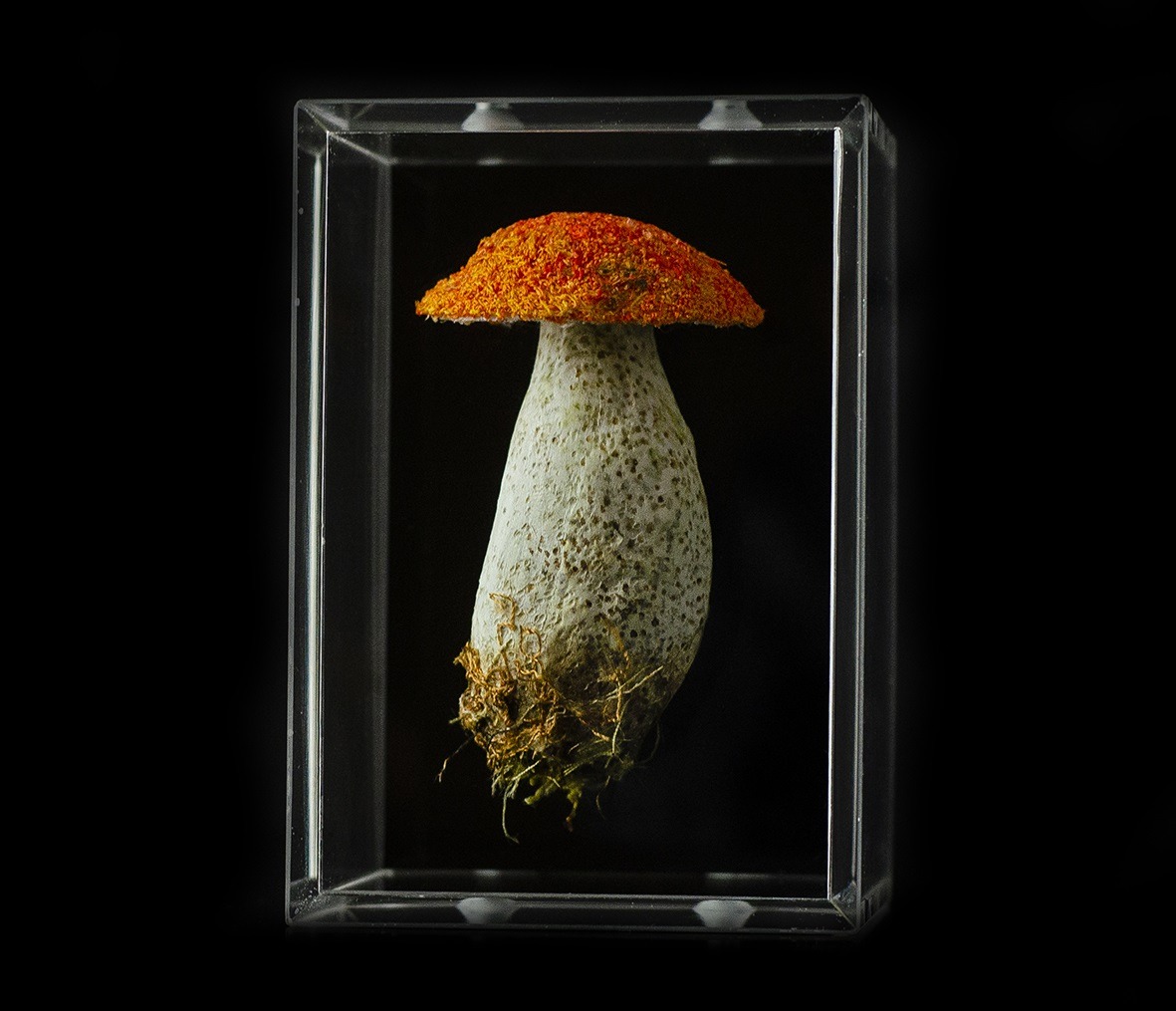
Hamburger buns and other shapes
TextileArtist.org: What initially attracted you to textiles as a medium? How was your imagination captured?
Amanda Cobbett: I have always loved textiles. I was encouraged to sew and make stuff on a machine from a very young age. I also made paper structures, and I have always explored everything with my hands.
I studied textiles at secondary school because I liked fashion. But I was more interested in making textile sculptures. Still, while the course was very traditional and tailored, it didn’t put me off. It taught me about the quality of finish.
I mostly researched the fashion designer Issey Miyake in my studies because his origami garments were fascinating! As a result and much to my teacher’s horror, while other students were making beautifully appliqued cushions, I made a giant hamburger cushion with beaded sesame seeds and organza lettuce. I was a challenging student, but the hamburger was well made!
I gave textiles a miss at A-level opting instead for sculpture. I loved it, and I found my happy place. But as much as I enjoyed working with wood and metal, my love for fabric and thread remained, which is why I took a degree in textile design.
I also ventured into specialising in weave, however, the process was too slow and controlled. So, print took preference, and I enjoyed 12 years designing fashion prints.
My need to physically make has always been with me, and now my work fulfills all those desires!
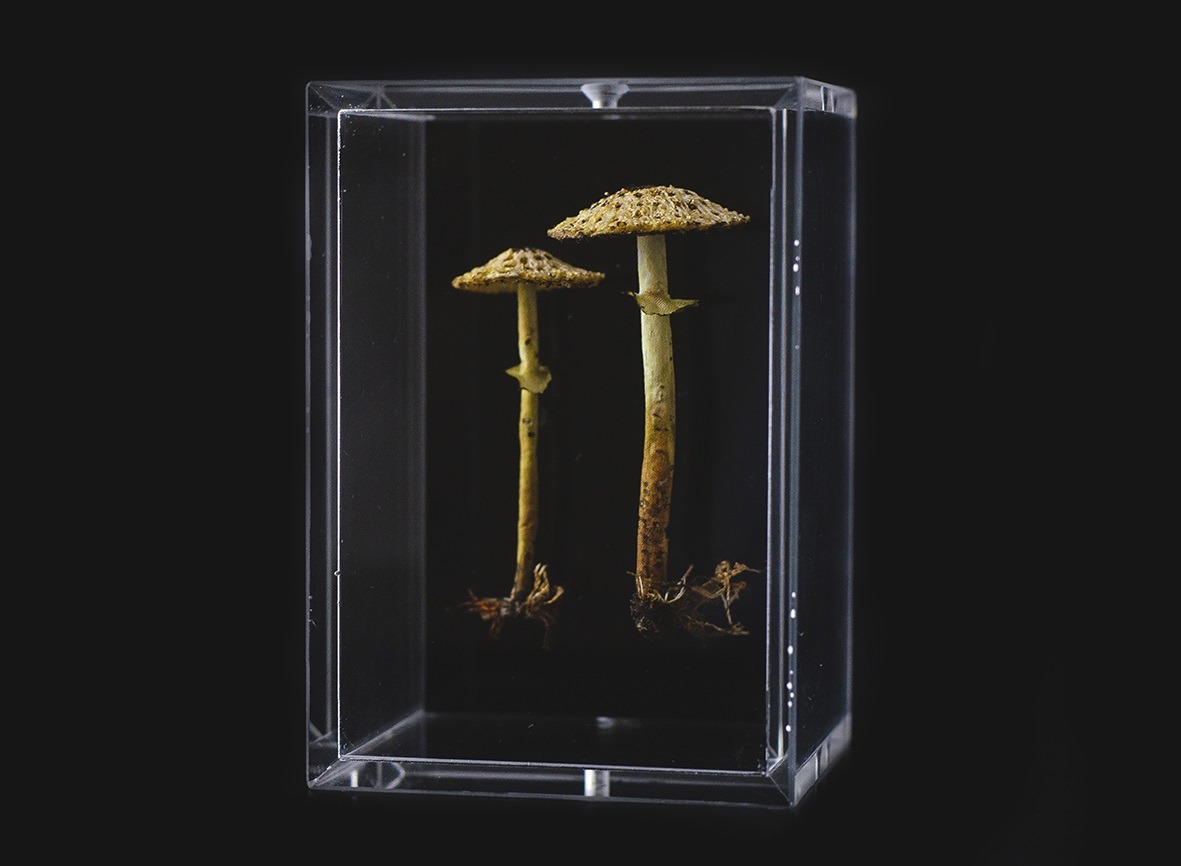
What or who were your early influences and how has your life/upbringing influenced your work?
My parents never pushed me academically, but they always gently encouraged me to be creative.
Both my grandmothers were great seamstresses, and my grandfather was a brilliant engineer and problem solver. He could take a 2-D drawing and make a 3-D object without hesitation.
I can visualise in 3-D too and thought everyone could until very recently! When I was about 6 years old, my dad (who was a draughtsman) taught me how to draw a cube and a cylinder. I understood it immediately and practised all the time.
He also used to test me about what basic shapes I saw in household objects.
I love a puzzle and am more adept with visual pointers than I am with letters and numbers. I use hand-eye coordination to mask out an idea.
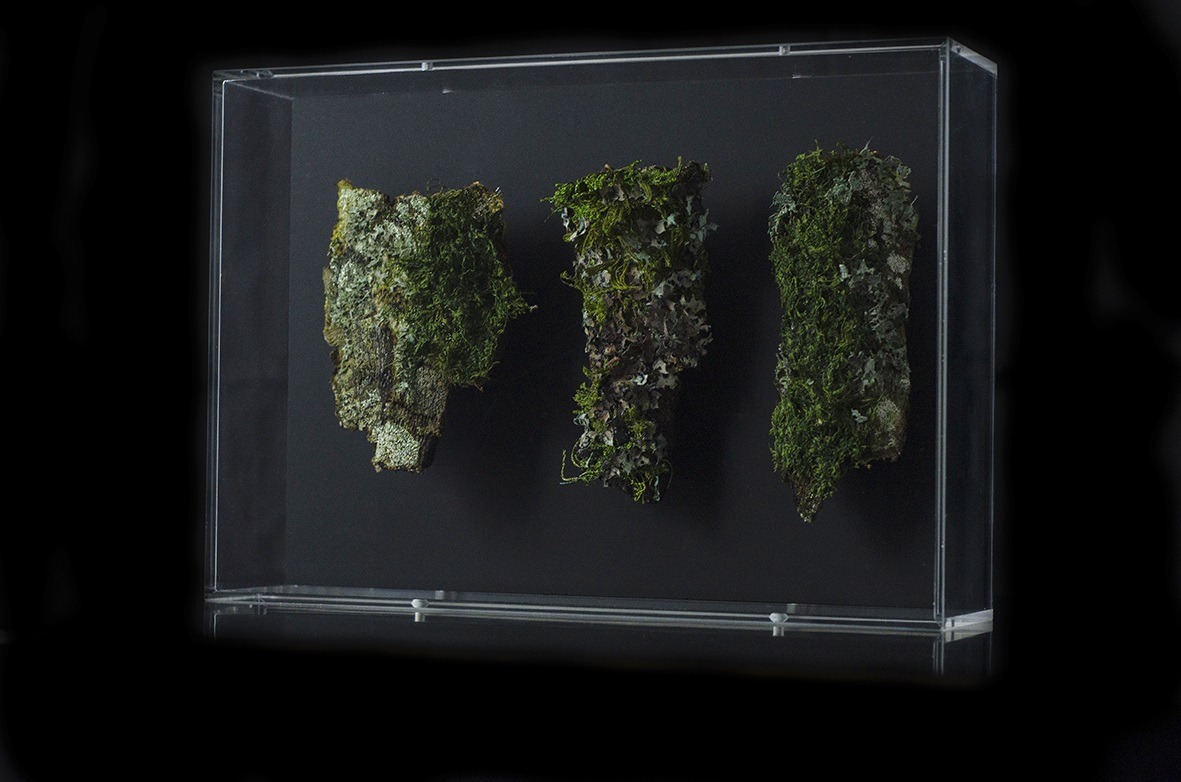
What was your route to becoming an artist?
After taking an art foundation and exploring my love of texture and mark making, I pursued a degree in textiles and specialised print at the Chelsea College of Art (UAL). I worked in commercial textiles for about 12 years designing print for fashion, furnishings and tableware.
That career taught me about research and the importance of being unique. In a world of millions of fashion prints, it’s the design that stands out above the rest that earns you a living. There is no opportunity to be bland—you need to be forward-thinking and abreast of current trends.
Also during that career, I was given an old Bernina sewing machine by a family friend, and I started experimenting mostly in 2-D. I used the machine purely as a drawing tool and started to make pieces that had texture but no form.
It was my walking in the forest that set me on the path to sculpting again. I wanted to find a way to preserve my beautiful found objects.
I had also been to the Overbeck’s National Trust property in Devon and was fascinated by the display cases of taxidermy birds and pinned-down butterflies. While their colours were iridescent and beautiful, I thought how sad it was that they had been captured and killed for human pleasure. So I wondered if there was a way to replicate that beauty without harm.
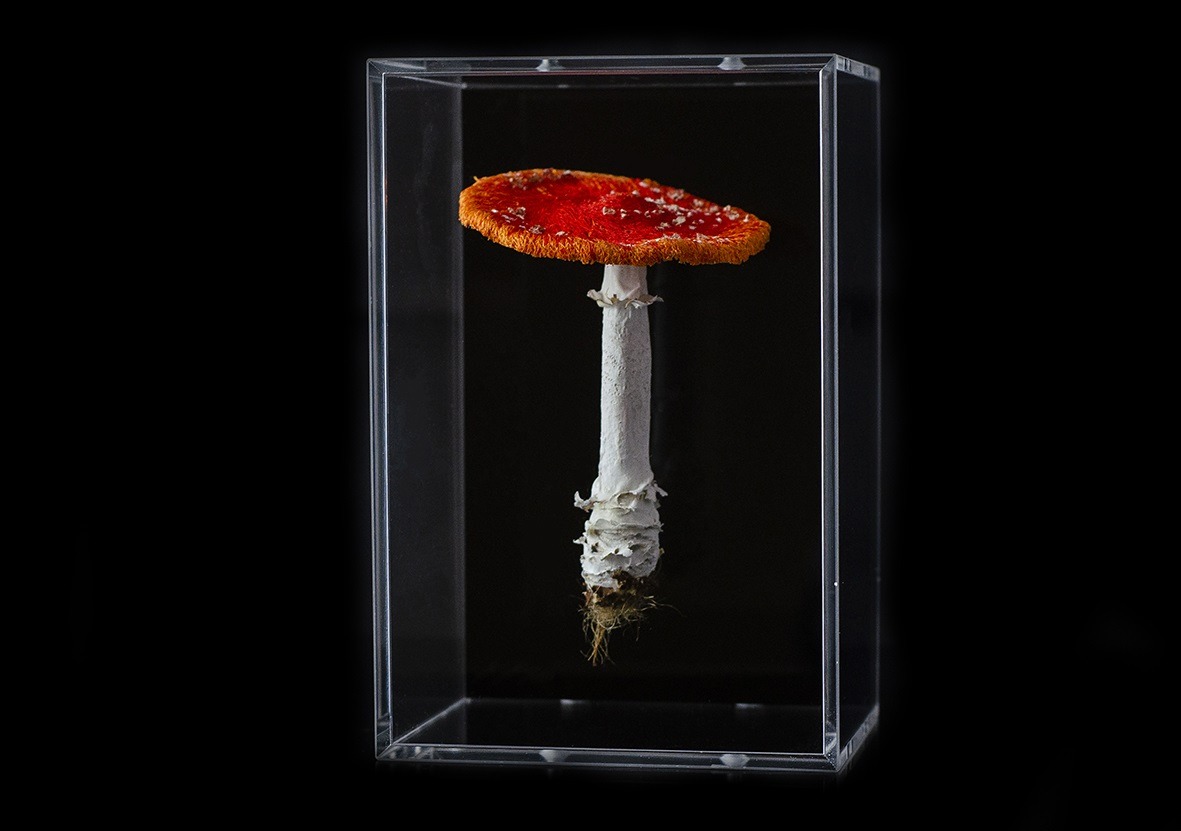
Finding beauty in the discarded
Tell us about your process from conception to creation
My process always starts with a morning walk in the forest. Then I return to the studio and start straight away on the sewing machine. I don’t sketch beforehand, as the needle and thread do that job.
I use an embroiderer’s hoop with machine stitching, often sewing into a dissolvable fabric. Discovering dissolvable fabric was a huge revelation. It’s so useful being able to build up layers and then wash away the carrier fabric!
After washing away the dissolvable fabric, I’m left with a new fabric which I can then use to create my pieces.
When it comes to machine stitching to create my fabrics, I am constantly developing new techniques. Different threads behave differently in any combination when put together, so the possibilities are endless. And I use rayon threads for vibrancy of colour.
I also make up papier mache stems for the fungi, but only if I have an hour or so to spare. I use traditional papier mache methods and cover the stem with fine silk. I then embellish the stem with sewing, markers, and pyrography techniques. Burning the fabric helps me achieve the natural colours one would expect from a mushroom stem.
Once each specimen is complete, I drill holes in them to secure a clear Perspex rod, so they can be inserted into a Perspex acrylic display box. I use the display boxes for observation as much as anything else. I want my work to be seen from all angles. But I also want the work to be preserved and to feel special. If it wasn’t in the box, it would be difficult to look after the piece of work.
It took me a long time to find the correct supplier who could share my vision. First attempts with various other suppliers didn’t meet the grade.
Quality has been paramount. It would be a shame to go to all the effort of making something hopefully viewed as beautiful and then mess up with its presentation!
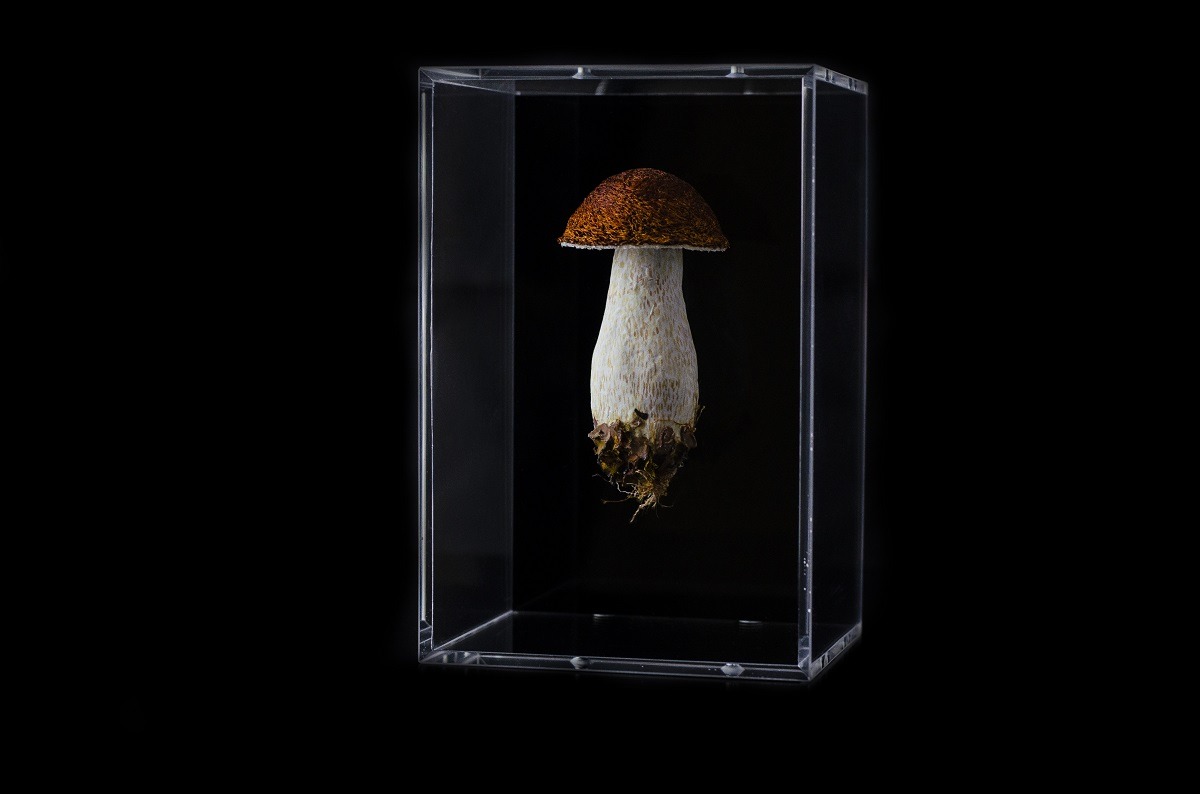
Tell us a bit about your chosen techniques and how you use them
Again, by using an embroidery hoop with dissolvable fabric, I can build up layers of thread by sewing and over sewing. Once this ‘new’ fabric I’ve made is washed and the original carrier dissolved, its thickness is malleable enough for me to begin to sculpt.
I don’t use any pastes, binders or forms. The thickness of my sewing in certain places will determine how it will behave once the dissolvable fabric is washed away.
I use a natural seaweed-based dissolvable material which if not entirely washed away will leave a size on the thread. But there is a fine line between over- and under-washing. So, the amount of thread to each piece is very much a trial and error method that’s unique to that piece.
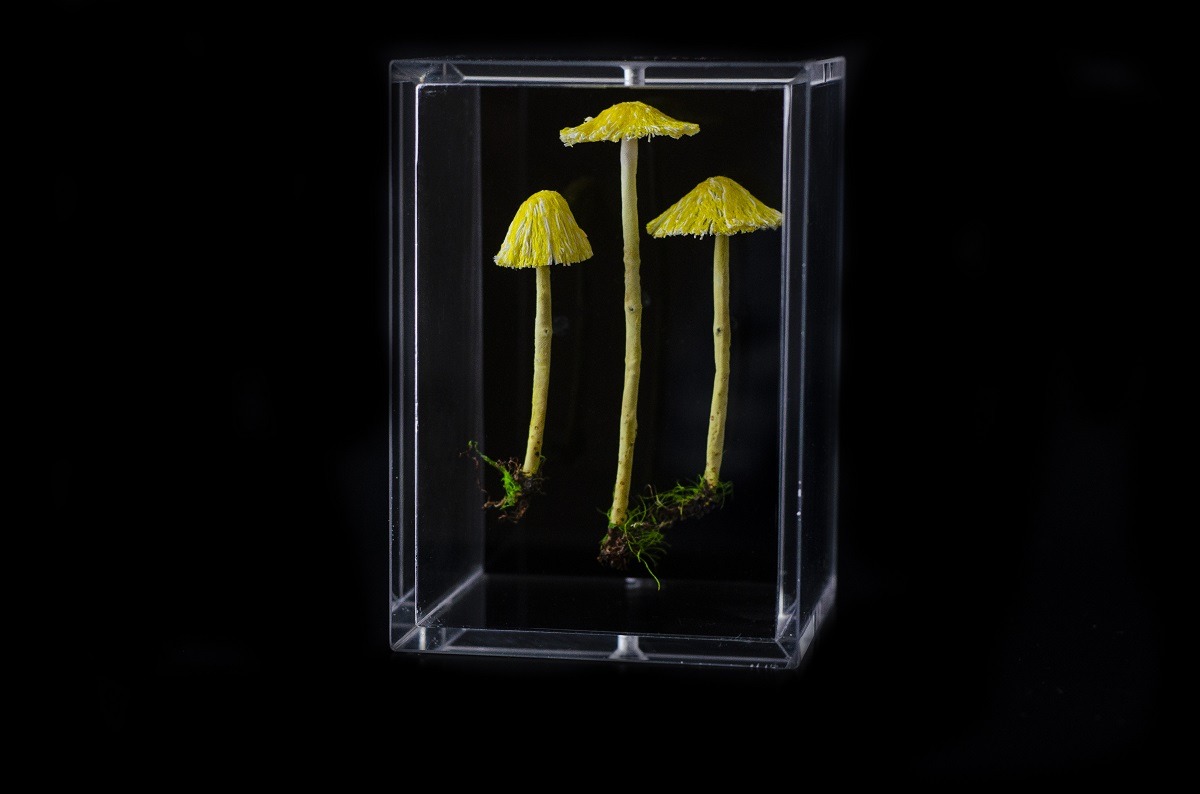
What currently inspires you?
I am and always have been inspired by nature. As a printed textile designer, I specialised in floral design. And now as a textile artist. my works relate to my forest walks.
The forest is a huge beautiful space. We are naturally inclined to look at the bigger picture, but then we risk missing the tiny details which can be found all around us. It’s creating the natural textile textures and colours that excites me.
I take in every aspect when I’m out walking, but often my eye is drawn to the discarded. To me, it’s a bit like a daily treasure hunt, and my pockets are filled with my finds!
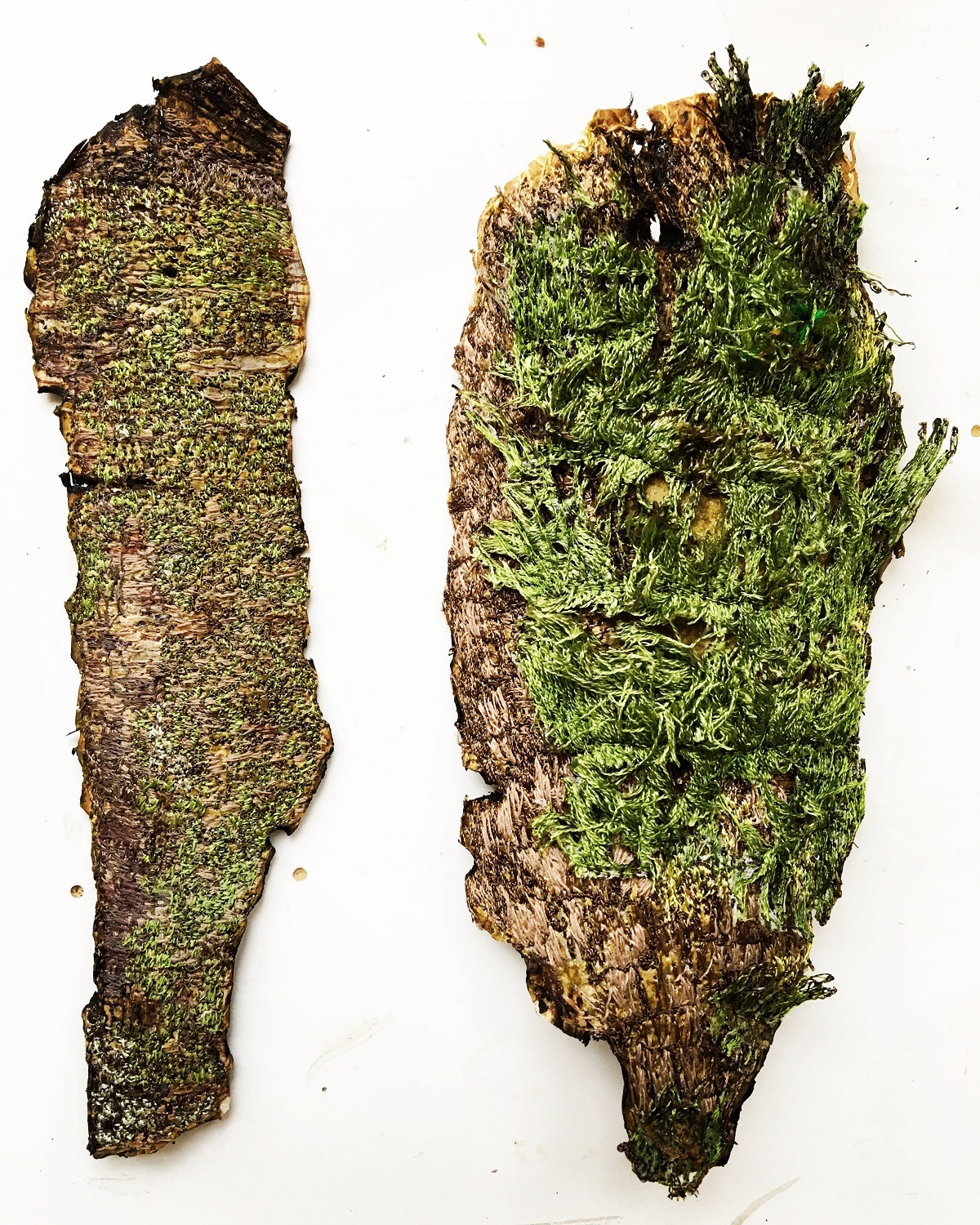
Fooling the eye
Tell us about a piece of your work that holds particularly fond memories and why?
The first time I exhibited the moss and lichen pieces at an RHS show I was overwhelmed by the positive feedback, You never quite know if what you are doing is going to be interesting to anyone else. So, for someone to be amazed that what I’d made had been completely embroidered and not real is such a thrill. It’s so rewarding to know I can believably trick the eye by using thread.
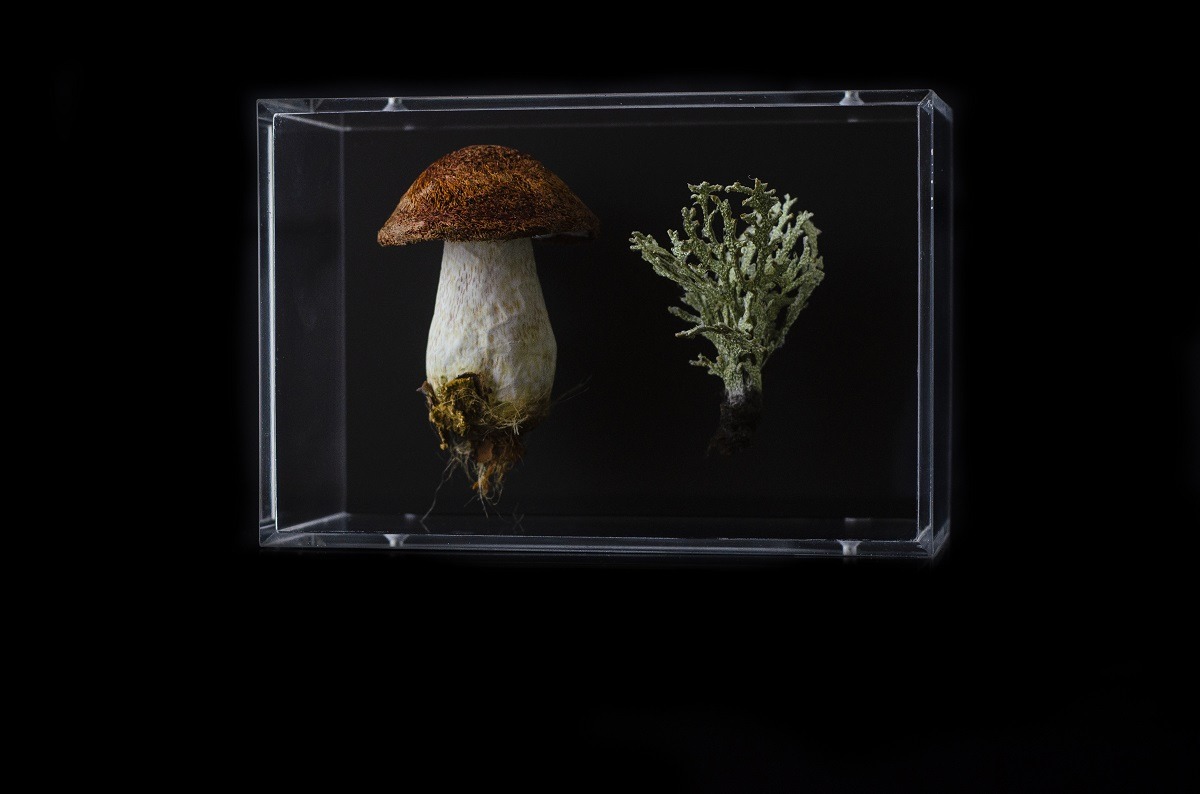
How has your work developed since you began and how do you see it evolving in the future?
Taking something that is flat and making it into 3D is the reason I love doing what I’m doing.
When I first started making using free machine embroidery, I was quite tentative, and it took me a long time to make each piece of work. But now I really push the machine and the threads to the limit. I aim to make much bigger pieces of work. I’d love to do a huge installation of forest floor finds.
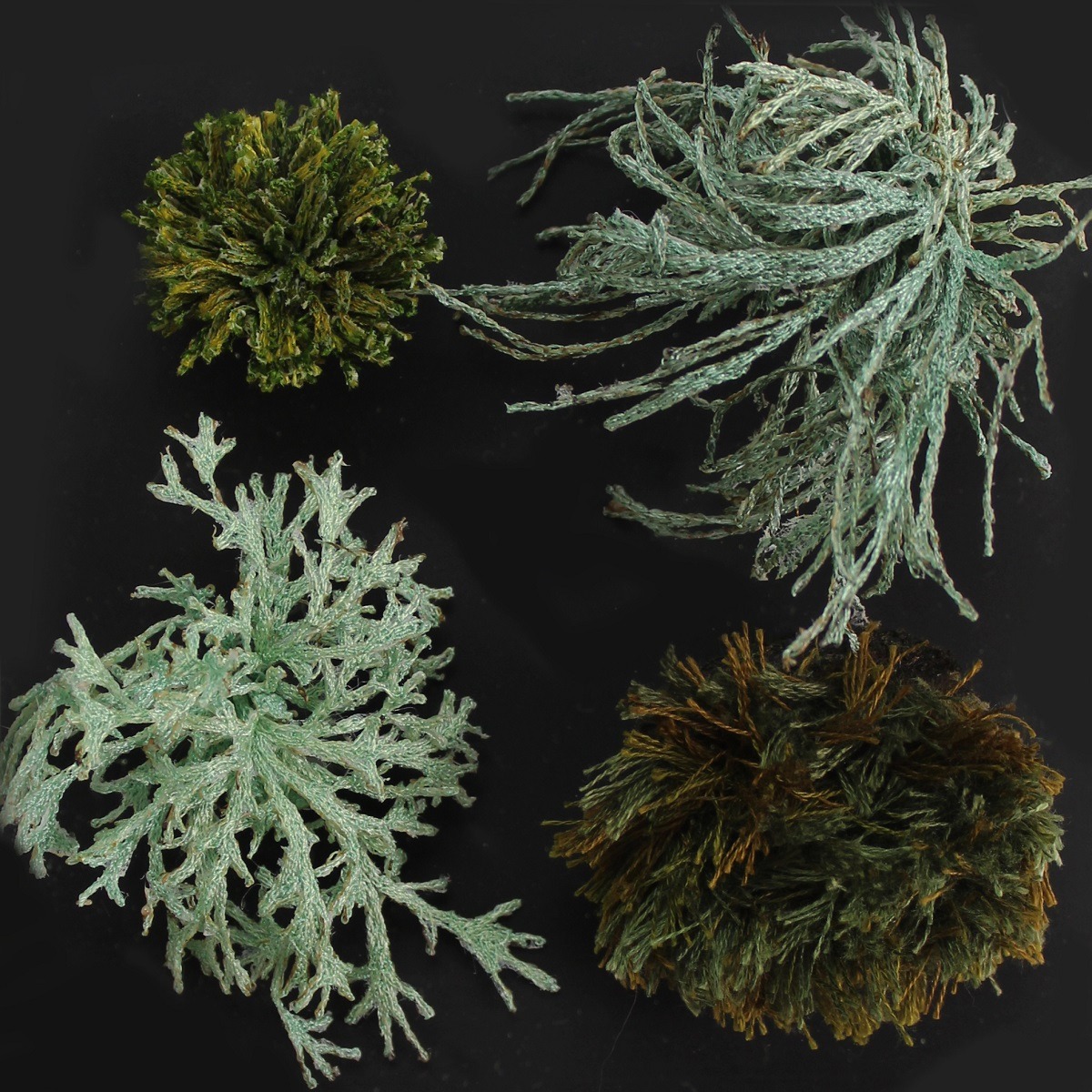
What advice would you give to an aspiring textile artist?
Do what makes you happy, and enjoy exploring and experimenting with all kinds of fabric and thread. I’ve never been set on the direction that a piece might be going as I start to make it, so I’m rarely disappointed with the outcome. This philosophy allows me to enjoy the process from start to finish without restraint.
For more information visit www.amandacobbett.com
Amanda enjoys ‘fooling the eye’ with her stitch sculptures. Did she succeed? Let us know in the Comments below
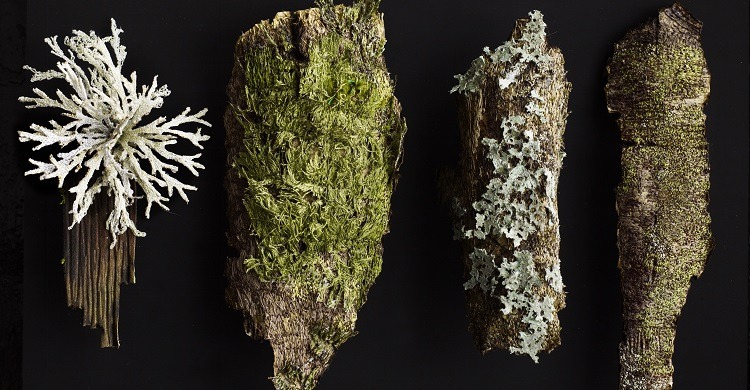
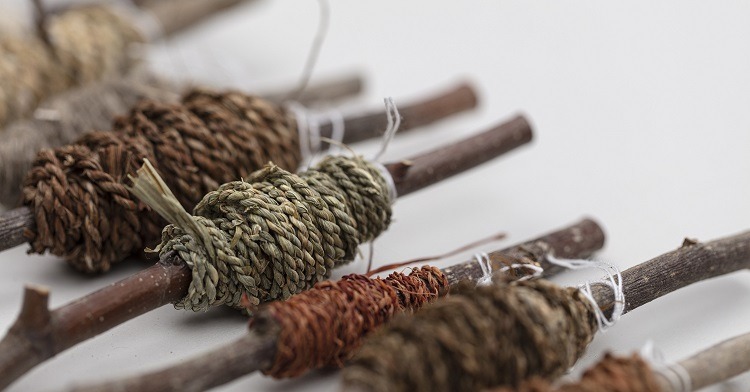
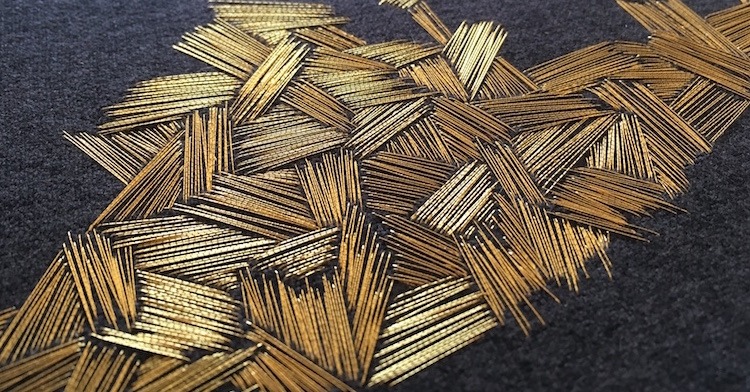
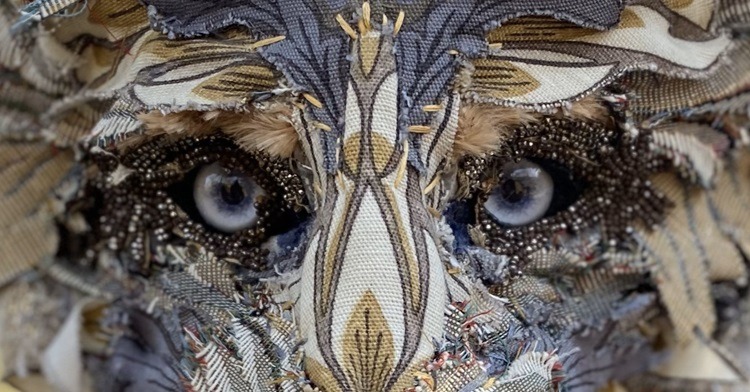
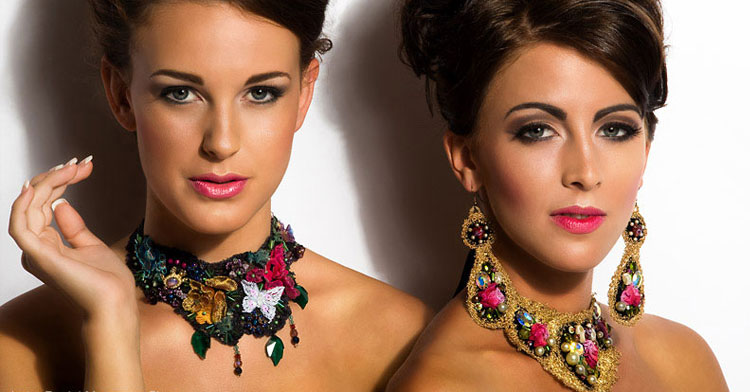
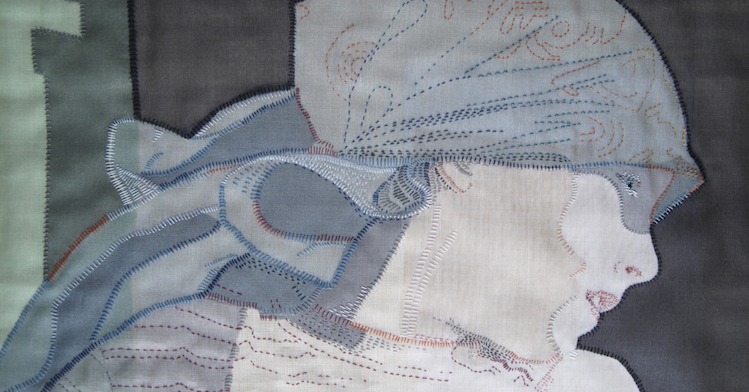
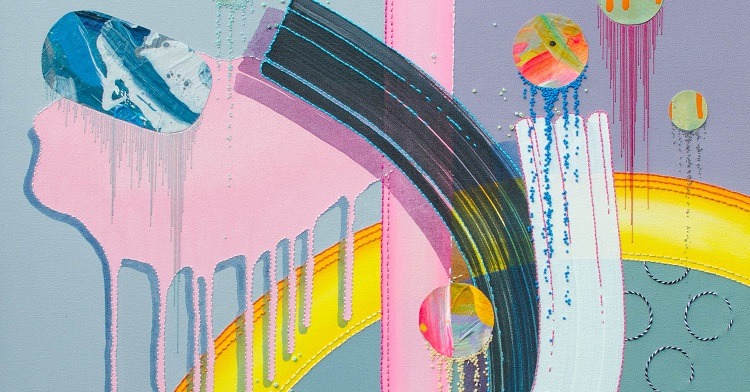
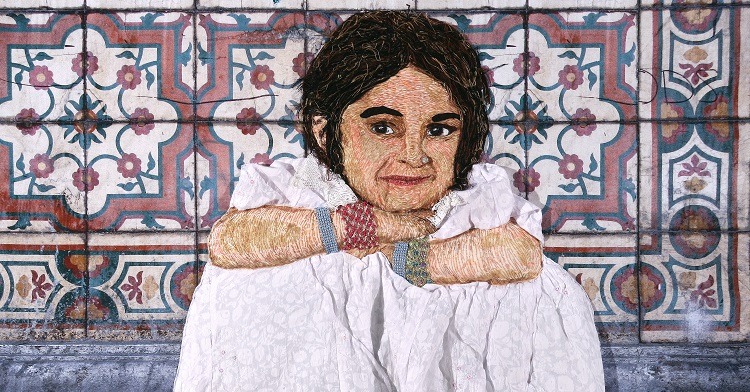
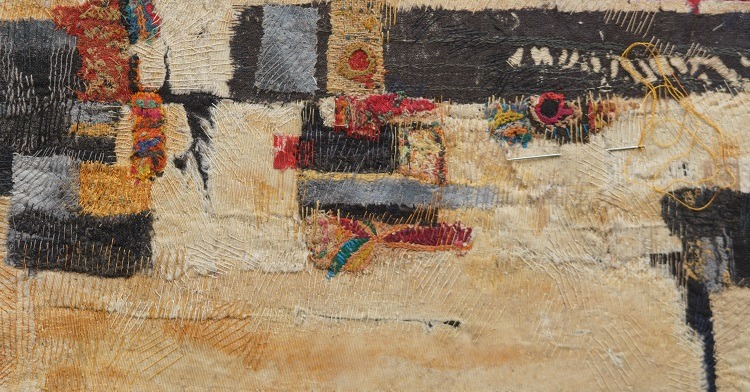
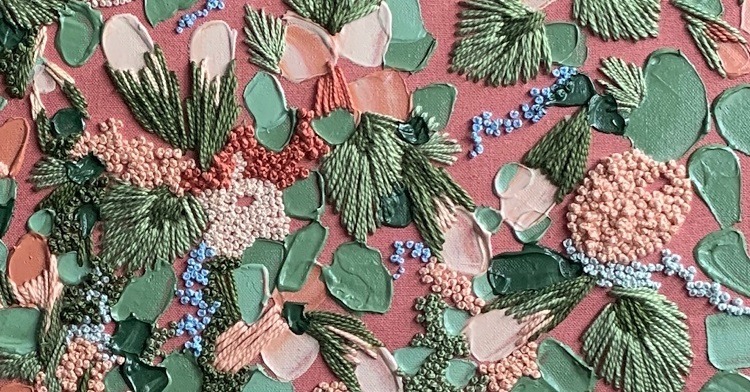
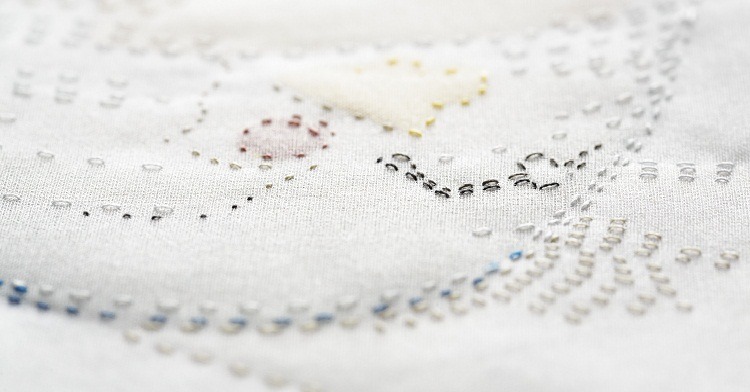
28 comments
Marjan Drop
Beautiful work Amanda , very inspiring!
Thank you for showing it !
Marilyn Hemsley
Remarkable work Amanda!
I will look out for your next exhibition
Roxanne Schuster
I too, love the little bits and pieces of things you find in nature. My pockets also fill with moss, birch bark, sticks, leaves, acorns and seeds. Your work is incredible, so beautiful and very inspiring. Thank you!
pivoine
AMAZING!! Thank you for allowing to see your process! Congratulations!
Lynn Watson
One big WOW!!! Amanda, your work is absolutely exquisite. You deserve all praise, as you have studied and worked for many years. I enjoyed your video and would so appreciate seeing your work at first hand.
I hope one day you will be able to come to Australia, perhaps through sponsorship, so we’ll be able to see your beautiful artwork. Once here, you will be able to travel and see the incredible plant life we have here, some of which is unique to our country. Following your visit, I’d expect another spectacular exhibition!
After the current Plague, of course. …. Very best wishes, Lynn
Norma Arthur
Lovely to see how this delicate and intricate work is produced by the artist.
Gabrielle Theano
For those inquiring about the dissolvable seaweed based medium, I believe Amanda is referring to Sodium Alginate, which is used as a thickener, but was also used for disposable medical laundry bags. I have used them for dissolvable machine sewing in the past. Unfortunately the ones used currently by the medical industry are now made of PVA, which is a plastic (same as white glue) derived from fossil fuels. PVA is dissolvable but not easily biodegradable ( in spite of what many marketing sites will say). Somewhat dishonestly the laundry bags are still called ‘alginate’ by manufacturers but are not made from seaweed.
I’m not sure where one can obtain true sodium alginate sheets.
rose
your attention to detail is beyond compare, the meticulous methods that you use are wonderful to behold, and the finished installations are beautiful. anyone can make something that looks a bit like,for example, a mushroom but you truly have made mushrooms!
thank you for allowing us to see and marvel at your creations.
Cathleen Palmer
Amazing work – so beautiful!
Do you sell your work Amanda?
Ann Brown
Exciting and beautiful work. Thankyou for sharing your processes. Just love your work.
Anne Moar
Superb textile treasures, bravo Amanda Cobbett!
Cornelia Payne
Stunning work. So inspiring. I have always been addicted to realistic and 3 D work. Display in the Perspex cases finishes it all off perfectly. I also would love to know where to obtain the clear seaweed dissolvable material. Thank you for the video and interview.
Jael Cohen
wow that is such an inspiring art, and you are an astonishing and absolutely amazing artist! i am in awe of your work. i am also a naturelover and find my inspirations in the forest and plants.my grandmother shared her wisdom and love about nature with me when i was a child. we can only copy the real art of the creator itself. as i grew older i studied ladiestailor and tailor for theater in Zürich longtime ago. some years ago i decided to give the plants a voice and make their beauty visible for people. so i created “elven-tailory” in my atelier sternenkind studio. i love to create enchanted fashion for elven – and naturelovers in 3-D bark and mossy look.
it is so great to see an artist that does have a similar looking artistic voice.
Namita
Amanda’s work really resonated with me and I loved her technique. Thanks so much for sharing!! Very special indeed.
Annette
Wow, I’m so bowled over by these amazing works. Especially the techniques used… brilliant!
Therese Stein
Whoa. Here’s me thinking in terms of a whole scene. My 2 or 3 dimensional scenes are a bit like this, but overwhelming to do. These isolated bits are even more effective. Possible to be much more detailed and really showcase the fine shapes, colors and textures. Good thing they are in plexi cases – everyone would be touching them. Thanks for letting us see your outstanding work. I may try to concentrate on some bits in future.
Claudia Garcia
Amazing, beautiful, intersting. Really love your artwork Amanda.
Ane McDonald
Amazing! Inspiring! Would love to see them in person. Any chance of a display in Sacramento?
Jessica Grimm
This is stunning! And I am completely captivated with her creative process. Thank you very much for introducing her work to me!
Brie Patterson
Such exquisite pieces! The work is done with such thoughtfulness and fine detail that they feel very real. Do you know how/where to find the natural seaweed-based dissolvable material?
Delia Cecil
Love your work, and loved watching the video, your attention to detail is amazing !!
Amanda
Hi Lesley,
Thank you for your comments! If you look on website at my new film you’ll be able to see one piece of lichen that I make and compare to the real specimen. Please also subscribe to my newsletter where I will keep you up to date of where I’ll be exhibiting next.
All best
Amanda
Mary Chidlow
Thank you Amanda for sharing your technique in developing such lifelike natural sculptures. So interesting to see textiles in 3D and made using the varying processes .
Tina Clay
Incredibly warm work and absolutely spellbinding!
Pat Bishop
Very unique and exceptionally done, I am a nature enthusiast and love to see nature representations. Her three dimensional pieces are inspiring.
Lesley Jackson
This is so interesting and wonderful. I would really like to see a real one of these fungi alongside the made one, so that I could see to what extent they differed, if at all; to see the art as well as the nature. I especially love the moss, bark and lichen pieces. I’s love to see them one day.
Amanda
Hi Lesley,
Thank you for your comments! If you look on website at my new film you’ll be able to see one piece of lichen that I make and compare to the real specimen. Please also subscribe to my newsletter where I will keep you up to date of where I’ll be exhibiting next.
All best
Amanda
Frances Black
This work is so exacting and enchanting. But I too would like to see the real with the crafted. It akin to seeing the photograph of a painting and the real one.